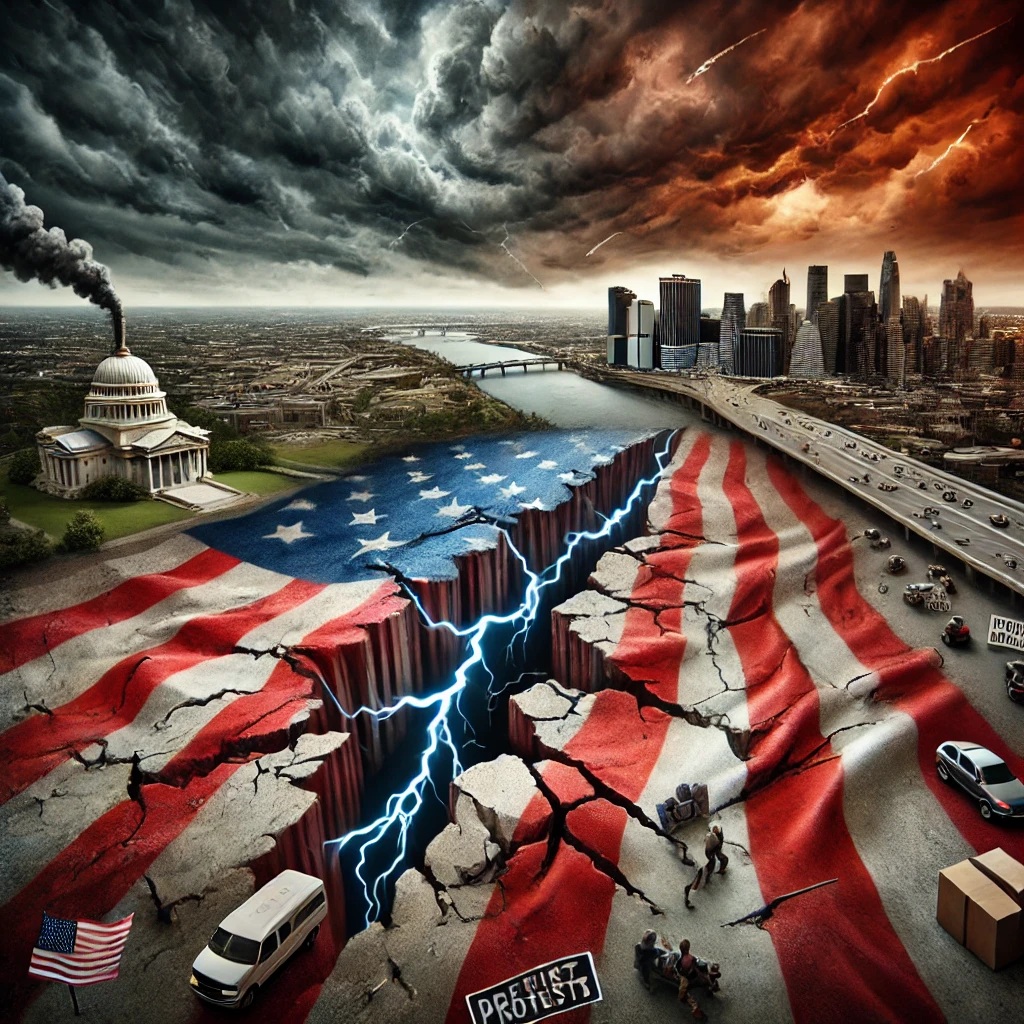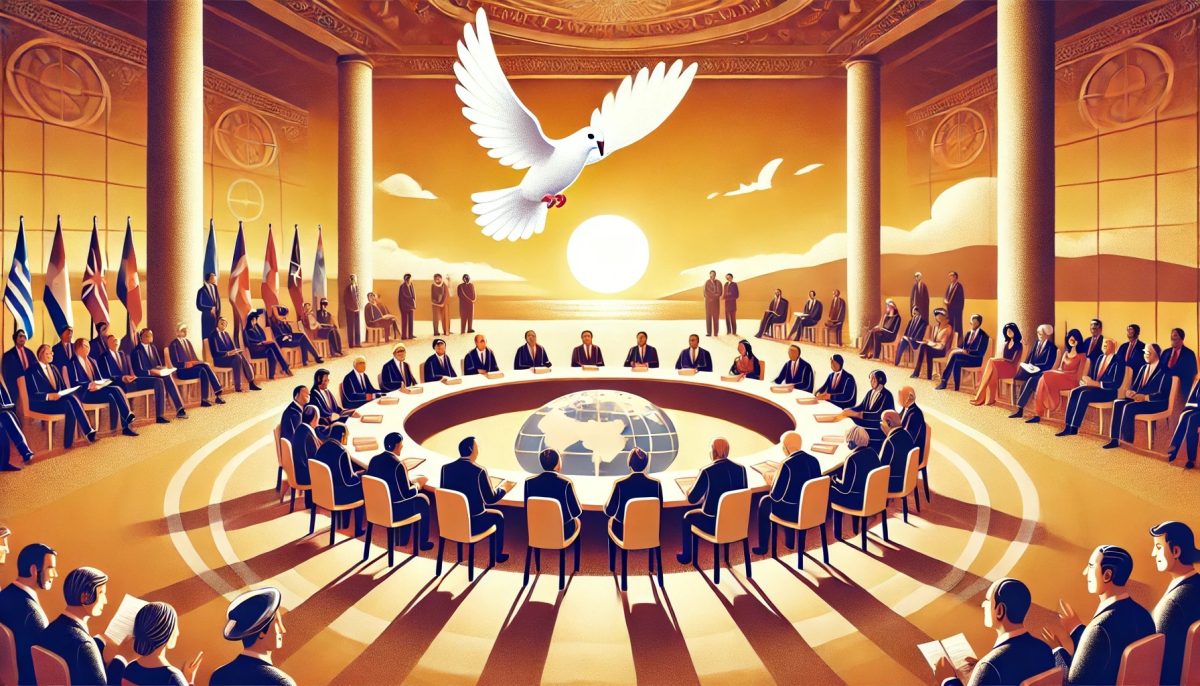Around 1995, the US Air Force conducted a major futurist research initiative known as “Air Force 2025”. It identified three predominant trends or axes and a number of scenarios for the future. To what extent have these proved accurate?
In the “Air Force 2025” study, the US Air Force identified three primary axes to frame future scenarios:
- American World View: This axis considered whether the United States of America would adopt an isolationist stance or maintain active global engagement.
- Rate of Technological Change (“Delta TeK”): This axis examined whether advanced technologies would remain concentrated among a few nations or become widespread.
- World Power Grid: This axis assessed whether economic, political, cultural, and military power would be centralized in a few major nations or broadly dispersed.
In regard to these three axes, where is the USA currently positioned?
1. American World View: Isolationism vs. Global Engagement
Current Position: Mixed, but leaning toward Global Engagement
The USA has oscillated between isolationism and active global involvement in recent years. Under the Trump administration (2017–2021), there was a shift toward nationalist and isolationist policies, including trade wars, withdrawal from international agreements (e.g., Paris Climate Accord, Iran nuclear deal), and a focus on “America First.” However, under the Biden administration, the USA re-engaged in international alliances, strengthening NATO, leading efforts in Ukraine against Russian aggression, and prioritising Indo-Pacific security against China’s rise. While domestic political divisions continue to fuel isolationist rhetoric, the USA remains deeply entangled in global security and economic systems.
2. Rate of Technological Change (“Delta TeK”): Concentrated vs. Distributed
Current Position: Rapidly Distributed
Technological advancements, particularly in artificial intelligence, cybersecurity, space technology, and autonomous systems, have progressed faster than expected. While the USA continues to lead in key areas such as AI and military R&D, the diffusion of technology is undeniable. China has emerged as a near-peer competitor, making significant advances in hypersonic weapons, quantum computing, and AI. Additionally, smaller nations and even non-state actors have gained access to sophisticated cyberwarfare tools and drone technology. The Air Force 2025 study expected some technological diffusion, but the scale and speed of China’s rise, coupled with the accessibility of disruptive technologies, have exceeded expectations.
3. World Power Grid: Centralised vs. Dispersed Power
Current Position: Becoming More Dispersed
The world order is shifting from unipolarity (post-Cold War USA dominance) to a more multipolar system. The rise of China as a global economic and military power, the resurgence of Russia as a disruptive force, and the strengthening of regional powers like India and the EU suggest a move toward dispersed global power. USA influence remains significant, particularly through its financial system, military alliances, and tech dominance, but it faces increasing challenges. The war in Ukraine, tensions in the South China Sea, and the growing assertiveness of non-Western alliances (e.g., BRICS, Shanghai Cooperation Organisation) indicate a move toward a world where power is more widely distributed.
Almost certainly, the current Republican administration (“Trump II”) is even more strongly isolationist, technological change is rapidly distributed, and the world power grid is far more dispersed. Which of the projected scenarios best fits this?
The scenario that aligns most closely is the emergence of a “gigantic, hostile Asian mega-nation.” This scenario envisages a world where advanced technologies are widely accessible, power is distributed among multiple actors, and the USA adopts a more insular stance, leading to the rise of a dominant Asian power.
This alignment reflects the contemporary geopolitical landscape, where technological advancements are globally diffused, power is multipolar, and USA foreign policy exhibits isolationist tendencies and China is emerging as that mega-nation.
What were the USA domestic predictions based on this scenario?
In the “Air Force 2025” study, the “gigantic, hostile Asian mega-nation” scenario anticipated several USA domestic developments:
- Economic Shifts: The USA economy would face challenges due to increased competition from the dominant Asian power, leading to potential declines in certain industries and job markets.
- Technological Adaptation: To maintain competitiveness, the USA would need to accelerate innovation and adapt to rapidly evolving technologies, particularly in defence and cybersecurity sectors.
- Military Restructuring: The USA military might undergo restructuring to address new global threats, focusing on advanced technologies and strategic alliances to counterbalance the Asian power’s influence.
- Domestic Policy Adjustments: There could be shifts in domestic policies to bolster economic resilience, enhance education in STEM fields, and strengthen infrastructure to support national security objectives.
There is very little evidence that these solutions were put into place. What, therefore, is the emerging domestic picture and what are its consequences?
Then the emerging domestic picture is likely characterised by economic stagnation, political instability, and reduced global influence. Here’s how this scenario might be unfolding:
1. Economic Consequences: Declining Competitiveness and Internal Inequality
- Loss of Manufacturing & Tech Leadership: Without strategic investment in emerging technologies, the USA may be falling behind in key sectors like AI, quantum computing, and green energy, particularly relative to China. Foreign competitors could increasingly dominate industries once led by the USA.
- Increased Economic Polarisation: The gap between rich and poor would widen as automation, AI, and outsourcing reduce traditional middle-class jobs, particularly in sectors like manufacturing and services.
- Debt Crisis & Inflation Pressures: Without effective economic policies, rising national debt and inflation could erode economic stability, leading to decreased public trust in financial institutions and governance.
2. Military & National Security Weaknesses
- Struggles to Maintain Global Presence: A failure to modernise the military in line with emerging threats—especially in cyberspace, unmanned systems, and space warfare—could reduce USA deterrence capabilities. As the world power grid becomes more multipolar, the USA might be less able to project influence effectively.
- Reduced Technological Edge: The USA military, once dominant in technology, may find itself increasingly dependent on outdated systems, particularly if defence R&D funding is misallocated or slowed.
3. Political and Social Unrest
- Isolationist Policies Deepening Divisions: The shift towards isolationism under a second Trump administration could exacerbate tensions between internationalist and nationalist factions within the USA, leading to heightened domestic political instability.
- Erosion of Institutions: Continued political polarisation and attacks on democratic norms may lead to declining trust in government institutions, media, and expertise, making it harder to implement long-term strategic planning.
- Rise in Domestic Extremism: Economic downturns and a loss of global status could fuel nationalism and populism, leading to an increase in internal divisions and civil unrest.
4. Reduced Global Influence
- China & Other Powers Fill the Vacuum: As USA international engagement declines, China, India, and regional coalitions (e.g., BRICS) would take on a greater role in shaping global economic and military policies.
- Decline in Soft Power: The retreat from international institutions (e.g., NATO, UN, WHO) could result in a loss of USA diplomatic leverage, making it harder to negotiate favourable trade deals or security agreements.
Long-Term Consequences
If these trends continue, the USA will decline in global power, with domestic consequences including economic stagnation, political fragmentation, and declining national security. Without intervention, the USA could face a new era of strategic vulnerability, where internal instability weakens its ability to respond to external threats.
In this context, what does ‘internal instability’ mean?
Internal instability refers to a broad set of domestic issues that weaken national cohesion, reduce government effectiveness, and create conditions for economic, social, and political turmoil.
1. Political Polarisation and Institutional Decline
- Deepening Political Divisions: The USA is increasingly split between opposing ideological factions, leading to gridlock in governance and an inability to enact long-term policies.
- Erosion of Democratic Norms: Trust in institutions (Congress, the judiciary, the electoral system) is declining, leading to fears of authoritarian shifts, legal uncertainty, and contested elections.
- Increased Partisan Conflict: Political violence, radicalisation, and a refusal to accept electoral outcomes could escalate, further weakening democracy.
2. Economic Disruptions and Inequality
- Widening Wealth Gap: The lack of strong economic policies may lead to more wealth being concentrated among a small elite, while the middle and working classes face declining job security.
- Declining Global Economic Position: If industries and technological leadership continue to shift to other nations, American workers may suffer from job losses and wage stagnation.
- Regional Economic Disparities: Some U.S. states may experience economic downturns while others thrive, leading to tensions between urban and rural areas, or between states with different political priorities.
3. Social Unrest and Civil Disorder
- Protests and Civil Disobedience: Worsening economic conditions and political alienation could result in widespread protests, some turning violent.
- Rise of Extremist Groups: Both left- and right-wing extremist factions could gain traction, fueling domestic terrorism risks.
- Breakdown in Social Trust: People losing faith in government, media, and law enforcement could lead to increased crime, vigilantism, and societal fragmentation.
4. Security and Law Enforcement Challenges
- Weakened National Security: Political instability can make it harder to implement cohesive foreign policy or defend against cyber, economic, or military threats.
- Struggles to Maintain Public Order: If trust in law enforcement erodes, police and government agencies may struggle to maintain order, especially in times of crisis (natural disasters, financial crashes, pandemics).
- Potential for Secessionist Movements: While unlikely in the near term, growing discontent could lead to states openly challenging federal authority, as seen in past historical examples.
The Consequences of Internal Instability
- The USA government may struggle to respond effectively to external threats due to domestic turmoil.
- Economic and political weakness could lead to a loss of global influence.
- Long-term instability could reduce investment, innovation, and social mobility, further deepening domestic divisions.
If these trends continue, the USA risks entering a period of managed decline, where internal crises make it increasingly difficult to maintain a seat among global leaders and economic dynamism. The ability to reverse this trajectory will depend on whether political leaders can implement stabilising policies and rebuild trust in institutions.
Back in the 90s, I was described as a ‘futurist’ – someone who studied trends and used those to consider what our world might look like if those trends continued. I was Research Director of a tiny ‘think tank’ project within a now defunct, professional institute (the IQA), “2020 Vision”, and for a while was UK Convenor of the World Future Society. The last time I drew on this work was around 2013, when I was commissioned to research how the UK financial sector needed to adapt to rid itself of its self-serving culture.


